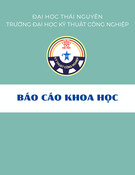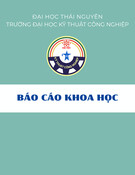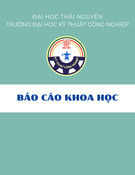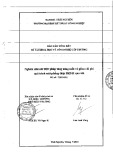
BioMed Central
Page 1 of 13
(page number not for citation purposes)
Journal of Translational Medicine
Open Access
Research
CTLA4 blockade increases Th17 cells in patients with metastatic
melanoma
Erika von Euw1, Thinle Chodon2, Narsis Attar2, Jason Jalil1, Richard C Koya1,
Begonya Comin-Anduix1 and Antoni Ribas*1,2,3
Address: 1Department of Surgery, Division of Surgical Oncology, University of California, Los Angeles (UCLA), Los Angeles, California, USA,
2Department of Medicine, Division of Hematology/Oncology, UCLA, Los Angeles, California, USA and 3Jonsson Comprehensive Cancer Center,
UCLA, Los Angeles, California, USA
Email: Erika von Euw - erivoneuw@yahoo.com.ar; Thinle Chodon - tchodon@mednet.ucla.edu; Narsis Attar - nattar@mednet.ucla.edu;
Jason Jalil - jjalil@ucla.edu; Richard C Koya - rkoya@mednet.ucla.edu; Begonya Comin-Anduix - bcomin@mednet.ucla.edu;
Antoni Ribas* - aribas@mednet.ucla.edu
* Corresponding author
Abstract
Background: Th17 cells are CD4+ cells that produce interleukin 17 (IL-17) and are potent
inducers of tissue inflammation and autoimmunity. We studied the levels of this T cell subset in
peripheral blood of patients treated with the anti-CTLA4 antibody tremelimumab since its major
dose limiting toxicities are inflammatory and autoimmune in nature.
Methods: Peripheral blood mononuclear cells (PBMC) were collected before and after receiving
tremelimumab within two clinical trials, one with tremelimumab alone (21 patients) and another
together with autologous dendritic cells (DC) pulsed with the melanoma epitope MART-126–35 (6
patients). Cytokines were quantified directly in plasma from patients and after in vitro stimulation
of PBMC. We also quantified IL-17 cytokine-producing cells by intracellular cytokine staining (ICS).
Results: There were no significant changes in 13 assayed cytokines, including IL-17, when analyzing
plasma samples obtained from patients before and after administration of tremelimumab. However,
when PBMC were activated in vitro, IL-17 cytokine in cell culture supernatant and Th17 cells,
detected as IL-17-producing CD4 cells by ICS, significantly increased in post-dosing samples. There
were no differences in the levels of Th17 cells between patients with or without an objective tumor
response, but samples from patients with inflammatory and autoimmune toxicities during the first
cycle of therapy had a significant increase in Th17 cells.
Conclusion: The anti-CTLA4 blocking antibody tremelimumab increases Th17 cells in peripheral
blood of patients with metastatic melanoma. The relation between increases in Th17 cells and
severe autoimmune toxicity after CTLA4 blockade may provide insights into the pathogenesis of
anti-CTLA4-induced toxicities.
Trial Registration: Clinical trial registration numbers: NCT0090896 and NCT00471887
Published: 20 May 2009
Journal of Translational Medicine 2009, 7:35 doi:10.1186/1479-5876-7-35
Received: 18 February 2009
Accepted: 20 May 2009
This article is available from: http://www.translational-medicine.com/content/7/1/35
© 2009 von Euw et al; licensee BioMed Central Ltd.
This is an Open Access article distributed under the terms of the Creative Commons Attribution License (http://creativecommons.org/licenses/by/2.0),
which permits unrestricted use, distribution, and reproduction in any medium, provided the original work is properly cited.

Journal of Translational Medicine 2009, 7:35 http://www.translational-medicine.com/content/7/1/35
Page 2 of 13
(page number not for citation purposes)
Introduction
Monoclonal antibodies blocking the cytotoxic T lym-
phocyte associated antigen 4 (CTLA4), a key negative reg-
ulator of the immune system, induce regression of tumors
in mice and humans, and are being pursued as treatment
for cancer [1-4]. CTLA4 blocking antibodies break toler-
ance to self tissues, as clearly demonstrated by the autoim-
mune phenomena in CTLA4 knock out mice [5,6], which
results in autoimmune toxicities in patients. Understand-
ing the immunological mechanisms guiding antitumor
responses and anti-self toxicities may allow improving the
use of this class of agents in the clinic.
The emerging clinical data suggests that a minority of
patients with metastatic melanoma (in the range of 10%)
achieve durable objective tumor responses when treated
with CTLA4 blocking monoclonal antibodies, with most
being relapse-free up to 7 years later. However, a signifi-
cant proportion of patients (in the range of 20–30%)
develop clinically-relevant toxicities, most often autoim-
mune or inflammatory in nature [2-4]. There is a preva-
lent thought that toxicity and response are correlated after
therapy with anti-CTLA4 blocking monoclonal antibod-
ies. This conclusion is based mainly on statistical correla-
tions in 2 × 2 tables grouping patients with toxicities and/
or objective responses. However, even though patients
with a response are more likely to have toxicities in these
series, most patients with toxicity do not have a tumor
response and there are occasional patients with an objec-
tive tumor response who never developed clinically-rele-
vant toxicities [2,7], thereby suggesting to us that the
relationship between toxicity and response is not linear. If
we assume that both phenomena (toxicity and response)
are mediated by activation of lymphocytes, then we need
to question their antigen specificity, since it is unlikely
that the same T cells that mediate toxicity in the gut, for
example, will be responsible for antitumor activity against
melanoma. It is more likely that the same threshold of
CTLA4 blockade may lead to activation of lymphocytes
reactive to self-tissues and cancer. Therefore, we studied a
differentiated subset of cells termed Th17, which have
emerged as key mediators of autoimmunity and inflam-
mation for their potential implication in toxicity and
responses after anti-CTLA4 therapy.
The description of Th17 cells has substantially advanced
our understanding of T cell-mediated inflammation and
immunity [8]. These cells are characterized as preferential
producers of IL-17A (also known as IL-17), IL-17F, IL-21,
IL-22, and IL-26 in humans. The production of IL-17 is
used to identify Th17 cells and differentiate them from
IFN-γ-producing Th1 cells, or IL-4-producing Th2 cells.
The transcription factor retinoic-acid-related orphan
receptor-γτ (ROR-γτ) and IL-1β and IL-23 are important
for the generation of human Th17 cells in vitro and in vivo
[8,9]. Th17 cells are potent inducers of tissue inflamma-
tion, and dysregulated expression of IL-17 appears to ini-
tiate organ-specific autoimmunity; this has been best
characterized in mouse models of colitis [10], experimen-
tal autoimmune encephalomyelitis (EAE) [11,12], rheu-
matoid arthritis [13] and autoimmune myocarditis [14].
In these models, mice treated with anti-IL-17 antibodies
have lower incidence of disease, slower progression of dis-
ease and reduced scores of disease severity. Treatment
with anti-IL-17 antibodies nine days after inducing EAE
significantly delayed the onset of paralysis. When the
treatment was started at the peak of paralysis, disease pro-
gression was attenuated [15]. Cytokines like IL-17A and
IL-17F, as well as IL-22 (a member of the IL-10 family) are
produced by Th17 and evoke inflammation largely by
stimulating fibroblasts, endothelial cells, epithelial cells
and macrophages to produce chemokines, cytokines and
matrix metalloproteinases (MMP), with the subsequent
recruitment of polymorphonuclear leukocytes to sites of
inflammation [16]. In addition, Th17 cells have been
associated with effective tumor immunity in a model of
adoptive transfer of TCR transgenic CD4+ T cells specific
for the shared self-tumor antigen tyrosinase-related pro-
tein 1 (TRP1) [17]. These cells were used for the treatment
of the poorly immunogenic B16 murine melanoma, and
the therapeutic efficacy of Th1, Th17, and Th0 CD4+ T cell
subsets was studied. The investigators demonstrated that
the tumor-eradicating population was the Th17 cells [17].
Tremelimumab is a fully human IgG2 monoclonal antibody
with high binding affinity for human CTLA-4 [18]. This anti-
body is in late stages of clinical development in patients with
metastatic melanoma [3,4,19]. It has a long plasma half life
of 22 days, which is identical to the half life of endogenous
IgG2s. When administered at doses of 10 to 15 mg/kg,
plasma levels of tremelimumab beyond 30 μg/ml are achiev-
able for 1 to 3 months [19]. This sustained antibody concen-
tration in plasma correlates with the in vitro concentrations
required to have a biological effect of CTLA4 blockade [18],
suggesting that sustained therapeutic levels of this antibody
can be achieved with the doses administered to patients. The
remarkably durable antitumor activity of tremelimumab in a
small subset of patients is mediated by T cell-induced tumor
regressions [20], but its use is limited by autoimmune and
inflammatory toxicities [3,4]. Therefore, understanding the
mechanisms that lead to toxicity and antitumor response are
of great importance to the development of CTLA4 blocking
antibodies. Here we report the increase in Th17 cells in
patients with metastatic melanoma after treatment with
tremelimumab with or without DC vaccines, and its prefer-
ential increase in patients that develop clinically-relevant
inflammatory and autoimmune toxicities.
Patients and methods
Description of Clinical Trials
Peripheral blood samples were obtained from leukapher-
esis procedures from 27 patients with metastatic melanoma

Journal of Translational Medicine 2009, 7:35 http://www.translational-medicine.com/content/7/1/35
Page 3 of 13
(page number not for citation purposes)
that had been treated at UCLA in two investigator-initiated
research protocols that included the anti-CTLA4 blocking
antibody tremelimumab (Pfizer, New London, CT). In
both clinical trials, patients underwent pre- and post-dos-
ing apheresis collecting PBMC and plasma, and the UCLA
IRB approved informed consent forms described their
banking for immune monitoring assays. Six patients were
treated in a phase I clinical trial of three biweekly intrader-
mal (i.d.) administrations (study days 1, 14 and 28) of a
fixed dose of 1 × 107 autologous DC pulsed with the MART-
126–35 immunodominant peptide epitope (MART-126–35/
DC) manufactured as previously described [21], concomi-
tantly with a dose escalation of tremelimumab at 10 (3
patients) and 15 mg/kg (3 other patients) every 3 months
(UCLA IRB# 03-12-023, IND# 11579, Trial Registration
number NCT0090896). The samples from these patients
were coded with the study denomination of NRA and a
patient-specific number. The remaining 21 patients were
enrolled in a phase II clinical trial of single agent tremeli-
mumab (UCLA IRB# 06-06-093, IND# 100453, Trial Reg-
istration number NCT00471887) administered at 15 mg/
kg every 3 months. The samples from these patients were
coded with the study denomination of GA and a patient-
specific number. Objective clinical responses were recorded
following a slightly modified Response Evaluation Criteria
in Solid Tumors (RECIST) [22]. The modification was to
consider measurable disease lesions in the skin and subcu-
taneous lesions detectable by physical exam, but not by
imaging exams, if they were adequately recorded at base-
line using a camera with a measuring tape or ruler. Toxici-
ties were recorded during the first 3 months of therapy (one
cycle of tremelimumab-based therapy), since the post-dos-
ing leukapheresis was performed only during the first cycle
of therapy, most frequently between 30 and 60 days from
the first dose of tremelimumab. The post-dosing leuka-
pheresis were performed a median of 41 days after the dose
of tremelimumab (range 28 to 81, with 6 cases out of the
30–60 day range). In all cases, concentrations of tremeli-
mumab in peripheral blood should have been above 10
μg/ml at the time of cell harvesting by leukapheresis, which
is the minimum concentration of tremelimumab that stim-
ulated a biological effect consistent with CTLA4 blockade
in preclinical studies [18]. Adverse events attributed to
tremelimumab by the study investigators were graded
according to the NCI common toxicity criteria version 2.0
[23]. Dose limiting toxicities (DLTs) were prospectively
defined in both studies as any treatment-related toxicity
equal or greater than grade 3, or the clinical evidence of
grade 2 or higher autoimmune reaction in critical organs
(heart, lung, kidney, bowel, bone marrow, musculoskele-
tal, central nervous system and the eye).
Sample Procurement and Processing
PBMC were collected from patients receiving tremelimu-
mab-containing experimental immunotherapy by a leu-
kapheresis procedure. Leukaphereses were planned as part
of the pre-dosing procedures, and one to two months after
receiving the first dose. Leukapheresis products were used
to isolate PBMC by Ficoll-Hypaque (Amersham Pharma-
cia, Piscataway, New Jersey, USA) gradient centrifugation.
PBMC were cryopreserved in liquid nitrogen in Roswell
Park Memorial Institute medium (RPMI, Gibco-BRL,
Gaithersburg, Maryland, USA) supplemented with 20%
(all percentages represent v/v) heat-inactivated human AB
serum (Omega Scientific, Tarzana, California, USA) and
10% dimethylsulfoxide (Sigma, St. Louis, Missouri, USA).
One hundred milliliters of plasma were collected during
the same apheresis procedures and were frozen at -20°C
in 1 to 10 ml single use aliquots. Plasma samples were
thawed and used immediately to measure cytokines.
Cytokine Detection in Plasma
Plasma samples from patients enrolled in the GA study
were assessed for 12 cytokines using a cytokine suspen-
sion array detection system. The cytokines quantified were
IL-1β, IL-2, IL-4, IL-5, IL-6, IL-10, IL-12 (p70), IL-13,
tumor necrosis factor alpha (TNF-α), IFN-γ, granulocyte
colony-stimulating factor (G-CSF), monocyte chemoat-
tractant protein 1 (MCP-1/MCAF) and Chemokine (C-C
motif) ligand 5, CCL-5 (RANTES). The assay was done
according to the manufacturer's instructions in 96-well
plates (Millipore, Billerica, Massachusetts, USA). Samples
were analyzed using the Bio-Plex suspension array system
(Bio-Rad Laboratories, Hercules, California, USA) and the
Bio-Plex manager software with 5PL curve fitting. In addi-
tion, IL-17, a cytokine not represented in the multiplex
cytokine detection kit described above, was quantified in
plasma using a commercially available ELISA according to
the manufacturer's instructions (eBioscience, San Diego,
California, USA). Cytokine concentrations were analyzed
in neat (undiluted) samples. The ranges of detection were
from 6.9 to 5000 pg/ml for IL-4, IL-5, IL-6, IL-10, IL-13,
TNF-α, from 12.3 to 9000 pg/ml for INF-γ and MCP-1,
from 4.1 to 3000 pg/ml for RANTES and from 3.9 to 500
pg/ml for IL-17.
Cytokine Detection in Culture Supernatants
Cryopreserved PBMC aliquots collected before and after
administration of tremelimumab within the GA and NRA
studies were thawed and immediately diluted with RPMI
complete media consisting of 10% human AB serum and
1% penicillin, streptomycin, and amphotericin (Omega
Scientific). Cells were washed and subjected to enzymatic
treatment with DNAse (0.002%, Sigma) for 1 hour at
37°C. Cells were washed again, and an aliquot of each
sample was sorted using CD4+ magnetic cell sorting beads
following the manufacturer's instructions (Miltenyi Biotec
Inc., Auburn, California, USA). 2 × 106 pre- and post-dos-
ing PBMC, and the same number of magnetic colum-
sorted CD4+ cells, were incubated for 4 days with 50 ng/

Journal of Translational Medicine 2009, 7:35 http://www.translational-medicine.com/content/7/1/35
Page 4 of 13
(page number not for citation purposes)
ml of anti-CD3 (OKT3, Ortho-Biotech, Bridgewater, New
Jersey, USA) and 1 μg/ml of anti-CD28 (BD Biosciences,
San Diego, California, USA) in 6-well plates. Cells were
spun down, and the supernatants were collected for IL-17
by ELISA assay. All samples were measured in duplicates.
Intracellular Flow Cytometry for IL-17
To enumerate Th17 cells by ICS, PBMC or sorted CD4+
cells were activated as described above for 4 days in anti-
CD3 and anti-CD28, and then re-stimulated for 5 hours
with 5 μg/μl PMA and 5 μg/μl ionomycin in the presence
of 1 μl/ml of a protein transport inhibitor containing
brefeldin A (GolgiPlug, BD Biosciences) in FACS tubes.
Cells were then surface stained with phycoerythrin (PE)
anti-human CD4 and peridinin-chlorophyll-protein com-
plex (PerCP) anti-CD3 (BD Biosciences) at room temper-
ature for 15 minutes, permeabilized and then stained
intracellularly with APC anti-IL-17 according to the man-
ufacturer's instructions (eBioscience). Isotype antibody
controls were used to enable correct compensation and to
confirm antibody specificity. Flow cytometry analysis was
conducted using FACSCalibur (BD Biosciences), and the
data was analyzed using FlowJo software (Tree Star, Inc.,
San Carlos, California, USA).
Statistical analysis
Statistically significant differences in the concentration or
percentage of IL-17 cytokine and Th17 cells between pre-
and post-treatment samples were analyzed using a two-
sided Student's paired t test using the Prism package
(GraphPad Software, Inc., San Diego, California, USA).
For all statistical analysis, the p value was set at p < 0.05.
There was no correction for multiple comparisons, and all
statistical analysis should be considered exploratory. All
error bars shown in this paper are standard errors of the
means (SEM).
Results
Patient Characteristics, Response and Toxicity
Table 1 provides a description of the study patients, their
baseline characteristics, the treatment received and the
outcome after therapy. Two thirds of the patients had M1c
metastatic melanoma (visceral metastasis and/or high
LDH), and most of the remaining patients had either in
transit (stage IIIc) or soft tissue and nodal metastasis
(M1a). There were 6 patients with objective tumor
responses among the 27 study patients, resulting in sus-
tained and durable tumor regressions in 5 of them, all
with either stage IIIc or M1a metastatic melanoma. Two of
these responses were among the 6 patients enrolled in the
NRA study that included both tremelimumab (one at 10
mg/kg and the other at 15 mg/kg, in both cases adminis-
tered every 3 months) and the MART-126–35 peptide
pulsed DC vaccine. The other 3 patients with an objective
response were among the 21 patients enrolled in the GA
study administering single agent tremelimumab at 15 mg/
kg every 3 months. For this study we graded toxicities dur-
ing the first 3 months of therapy, which is considered one
cycle. Among these patients there were 3 with toxicities
that met the definition of DLTs as included in the clinical
trial protocols, all in the GA study. These included two
cases of grade 3 diarrhea or colitis and one patient with
symptomatic panhypopituitarism (grade 2 hypophysitis).
None of these patients received corticosteroids before the
post-dosing apheresis.
No Change in IL-17 in Plasma of Patients Receiving
Tremelimumab
We analyzed the amount of IL-17 at baseline compared to
post-tremelimumab aliquots of cryopreserved plasma
obtained by apheresis. The concentration was very low in
all samples (median of 4 pg/ml), and there were no evi-
dent differences between pre- and post-dosing samples
(Figure 1A). We then analyzed an extended panel of
cytokines in the same plasma samples using a multicy-
tokine array to determine if a preferential cytokine profile
was evident after CTLA4 blockade in patients. Levels of
IL1-β, IL-2 and IL-12 were under the limit of detection for
all samples. Levels of IL-4, IL-5, IL-6, IL-10, IL-13, TNF-α,
INF-γ, MCP-1 and RANTES were detectable above the
assay background, with no differences between pre- and
post-dosing samples in most patients resulting in non-sig-
nificant differences using a paired t test (Figure 1B). How-
ever, the results of one of the patients, GA18, are worth
noting as an outlier in this group of patients. This patient
entered the study with in transit skin metastasis that pro-
gressed after adjuvant interferon alpha 2b and GM-CSF,
this last treatment stopped approximately two months
before initiating tremelimumab. This patient went onto
have a complete response that is ongoing over 1 year from
study initiation. Table 2 provides complete results of the
cytokine analysis in this patient, which demonstrates
post-dosing increases in IL-4, IL-6, IL-10, IL-13, TNF-α,
MCP-1 and RANTES (but not IL-5, IL-17 and INF-γ). These
changes were not noted in any of the other 5 patients with
an objective tumor response in this series, nor in patients
with clinically-significant toxicities. In conclusion, there
were no significant changes in circulating levels of
cytokines after the administration of tremelimumab in
most patients included in this series, and in particular
there were no significant changes in circulating levels of
IL-17 in the plasma of any patient.
IL-17 Production Increases in Ex Vivo Activated PBMC
We examined the difference in the amount of IL-17
cytokine secreted by ex vivo activated cells obtained from
pre- and post-dosing leukapheresis. The spontaneous
cytokine production of non-stimulated PBMC was under
the limit of detection for IL-17, as was for the rest of the
cytokines measured by array (data not shown). Therefore,

Journal of Translational Medicine 2009, 7:35 http://www.translational-medicine.com/content/7/1/35
Page 5 of 13
(page number not for citation purposes)
Table 1: Patient characteristics
Patient ID Sex Age Stage Location of Metastasis Treme-limumab
(mg/kg q3mo)
MART-1/DC Toxicities During the First Cycle Tumor Response
NRA11 M 57 M1c LN, Muscle 10 Y - PD
NRA12 M 55 M1c Lung, Liver 10 Y - PD
NRA13 F 34 M1c SC, LN, Muscle, Breast 10 Y - PD
NRA14 M 57 IIIc SC 15 Y - CR
NRA15 M 48 M1a LN 15 Y - PR
NRA16 F 61 M1a S.C. 15 Y - PD
GA 5 M 65 M1c Skin, LN, Adrenal 15 N - PR, then PD
GA 7 M 62 IIIc Skin 15 N G2 Pruritus PD
GA 8 F 48 M1c SC 15 N G2 Diarrhea PD
GA 9 M 52 M1c LN, Bone 15 N - PD
GA 11 M 47 M1c LN 15 N - PD
GA 12 M 76 M1c Skin 15 N G3 Colitis PD
GA 13 M 37 M1a LN 15 N G2 Hypophysitis PD
GA 14 M 38 M1c SC, Muscle 15 N - PD
GA 15 M 58 M1c Brain, Bowel, Liver 15 N - PD
GA 18 F 49 M1a Skin 15 N - CR
GA 19 M 55 M1c LN, Brain 15 N G2 Diarrhea PD
GA 21 M 71 M1c Skin, SC, LN, Liver, Spleen 15 N - PD
GA 23 M 27 M1b Lung 15 N - PD
GA 24 M 81 M1c SC, Lung 15 N - PD
GA 25 M 71 M1c LN 15 N - PD
GA 26 M 68 M1b LN, Lung 15 N G3 Diarrhea PD
GA 27 M 52 M1c SC 15 N G2 Pruritus PD
GA 28 M 48 M1c LN, Lung 15 N - PD
GA 29 F 79 IIIc Skin, SC 15 N G2 Diarrhea CR
GA 32 M 36 M1c Muscle 15 N - PD
GA 33 F 49 IIIc Skin 15 N - CR
MART-1/DC: MART-126–35 peptide pulsed dendritic cells; G: grade; LN: lymph node; SC: subcutaneous; M: male; F: female; Y: yes; N: no; PD:
progressive disease; SD: stable disease; PR: partial response; CR: complete response.






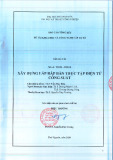




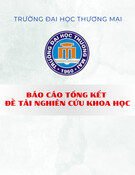

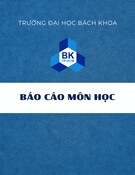

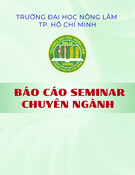
![Báo cáo seminar chuyên ngành Công nghệ hóa học và thực phẩm [Mới nhất]](https://cdn.tailieu.vn/images/document/thumbnail/2025/20250711/hienkelvinzoi@gmail.com/135x160/47051752458701.jpg)
